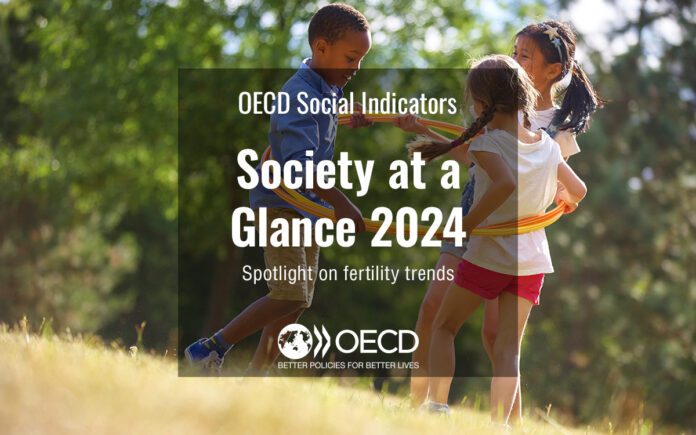PARIS, France – Fertility rates have declined by half in OECD countries over the past 60 years, posing the risk of population decline and serious economic and social challenges for future generations, according to a new OECD report.
The 2024 edition of Society at a Glance shows that the total fertility rate dropped from 3.3 children per woman in 1960 to just 1.5 children per woman in 2022, on average across OECD countries. This is significantly below the “replacement level” of 2.1 children per woman needed to keep population constant in the absence of migration. The total fertility rate is low in Italy and Spain, at 1.2 children per woman in 2022, and lowest in Korea, at an estimated 0.7 children per woman in 2023.
Low fertility rates could lead to population decline starting in the coming decade, with deaths outpacing births for the first time in at least half a century. The number of individuals aged 65 and over for every 100 people of working age is also projected to double from 30 in 2020 to 59 in 2060 across the OECD area. The resulting shrinking working populations could lead to ageing societies that place significant social and economic pressures on governments, notably to increase expenditures on pension and health services.
A second major trend identified in Society at a Glance is later parenthood, with the average age of women giving birth rising from 28.6 in 2000 to 30.9 in 2022. When comparing women born in 1935 and 1975, the percentage of women without a child about doubled in Estonia, Italy, Japan, Lithuania, Poland, Portugal and Spain.
Personal choices of having children are influenced by a range of factors, including economic and social parenting pressures, as well as changing social attitudes, such as the de-stigmatisation of having no children. Multifaceted policy approaches will be needed to assist people’s decision to have children.
“While OECD countries are using a range of policy options to support families, the economic cost and long-term financial uncertainty of having children continue to significantly influence people’s decision to become parents,” Stefano Scarpetta, director of the OECD’s Employment, Labour and Social Affairs Directorate, said. “Facilitating parenthood decisions requires comprehensive and reliable support to families. This includes affordable housing, family policies that help reconcile work and family life, and coherence with other public policies that promote access to quality jobs and career progression of women.”
Society at a Glance shows that increased housing costs since the mid-2010s have complicated the formation of long-term relationships and families, with an ever-increasing number of young people in their 20s and 30s living with their parents for financial reasons. Access to more affordable housing would make it easier for young individuals to start families.
With the number of dual-earner households growing, better family policies that help reconcile work and family life would help improve fertility. Historically, higher employment rates among women were linked to low fertility, while they are now positively correlated across the OECD on average.
Countries also need to consider how to adapt their policy strategies to a new “low-fertility future”. This includes a proactive approach to migration and integration and facilitating access to employment for under-represented groups. Increasing productivity would also help mitigate the economic and fiscal consequences of a potentially shrinking workforce.





